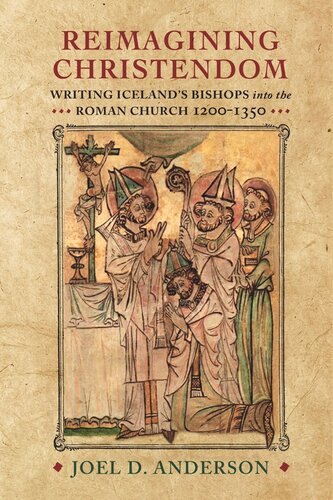

Most ebook files are in PDF format, so you can easily read them using various software such as Foxit Reader or directly on the Google Chrome browser.
Some ebook files are released by publishers in other formats such as .awz, .mobi, .epub, .fb2, etc. You may need to install specific software to read these formats on mobile/PC, such as Calibre.
Please read the tutorial at this link: https://ebookbell.com/faq
We offer FREE conversion to the popular formats you request; however, this may take some time. Therefore, right after payment, please email us, and we will try to provide the service as quickly as possible.
For some exceptional file formats or broken links (if any), please refrain from opening any disputes. Instead, email us first, and we will try to assist within a maximum of 6 hours.
EbookBell Team

0.0
0 reviewsIn Reimagining Christendom, Joel D. Anderson traces the web of textual ties that connected the northern fringes of Europe to the Roman see and explores the ways in which Norse writers recruited, refashioned, and repurposed the legal principles and official documents of the Roman church for their own ends.
With its expanding legal system and its burgeoning throngs of lawyers, legates, and documents, the papacy of the thirteenth and fourteenth centuries has often been credited with spearheading a governmental revolution that molded the high medieval church into an increasingly disciplined, uniform, and machine-like institution. Reimagining Christendom offers a fresh appraisal of these developments from a surprising and distinctive vantage point. Tracing the web of textual ties that connected the northern fringes of Europe to the Roman see, Joel D. Anderson explores the ways in which Norse writers recruited, refashioned, and repurposed the legal principles and official documents of the Roman church for their own ends.
Drawing on little-known vernacular sagas, Reimagining Christendom is populated with tales of married bishops, fictitious and forged papal bulls, and imagined canon law proceedings. These narratives, Anderson argues, demonstrate how Norse writers adapted and reconfigured the institutional power of the church in order to legitimize some of the thoroughly abnormal practices of their native bishops. In the process, Icelandic clerics constructed their own visions of ecclesiastical order—visions that underscore the thoroughly malleable character of the Roman church’s text-based government and that articulate diverse ways of belonging to the far-flung imagined community of high medieval Christendom.